- How to Make a Perfect Delmonico Steak at Home – September 21, 2025
- How to Cook a Perfect Delmonico Steak at Home – August 27, 2025
- Dry Aged Delmonico: Why It’s the King of Steaks – August 26, 2025
The funny thing about a Delmonico steak is that everyone talks about it like it’s this legendary, perfect cut, and yet, the first time I tried making one at home, I nearly set off the smoke alarm. I thought I had it all figured out: hot pan, fancy salt, a splash of oil. What I got? Dry edges, uneven doneness, and that sinking “I just wasted $30 on beef” feeling.
But here’s the twist. After a couple of messy attempts (and a few muttered curse words), I realized the steak wasn’t the problem. It was me rushing the process, treating it like just another piece of meat. A Delmonico demands drama, thick, sizzling heat, and the patience to let it rest even when your stomach is growling.
So, this isn’t just another steak recipe. Think of it more like a roadmap: we’ll clear up the confusing history behind what a “true” Delmonico actually is, walk through the steps for pan or grill success, and call out the rookie mistakes that’ll ruin it faster than you can say “medium-rare.” By the end, you’ll have something better than instructions, you’ll have the confidence to nail it every single time.
What Is a Delmonico Steak? History & Variations
Okay, confession time: the first time someone asked me “So… what exactly is a Delmonico steak?” I froze. I thought I knew. I mean, it’s steak, right? But the truth is a little messier, and that’s kind of the fun part.
Delmonico’s, the famous New York restaurant back in the 1800s, put this thing on the map. Diners went crazy for it, but here’s the kicker: they never wrote down which cut they were serving. Seriously. Some people will swear it was a ribeye. Others will bet their cast-iron skillet it was a New York strip. I’ve even met a guy who insisted it was filet mignon, which… I don’t buy. (Filet’s tender, sure, but a Delmonico is supposed to have a little swagger, you know?)
So where does that leave us today? Pretty much in “choose your own adventure” territory. My butcher calls ribeye Delmonico. A steakhouse in Chicago I went to once brought me a strip. Honestly, I don’t fight about it anymore. What matters:
- Thickness , you want a slab at least 1.5 inches thick. Thin cuts just don’t deliver the same drama.
- Marbling , those little white rivers of fat? They melt and make magic. Ribeye usually wins here.
- Attitude , if it feels like a steak that should come with a glass of red wine and a little ceremony, it’s probably close enough.
And maybe that’s the point. A Delmonico isn’t one single cut, it’s more of a vibe. Big, bold, slightly indulgent. The kind of steak that makes you clear the table and light a candle, even if it’s Tuesday night.
Is a Delmonico Steak Always the Same Cut?
Nope. That’s the beauty and the headache of it. Sometimes it’s ribeye, sometimes strip, sometimes even chuck-eye. Best move? Ask your butcher what their version is before you buy. Saves a lot of guesswork (and disappointment).
Choosing the Cut & Tools
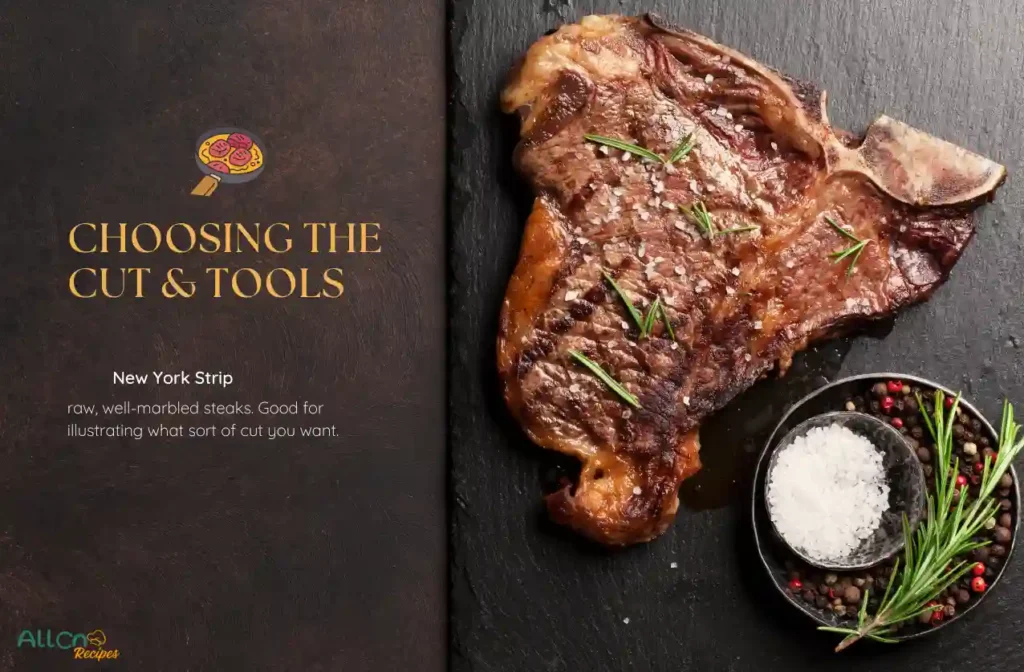
Here’s where a lot of people trip up: you walk into a butcher shop (or, let’s be honest, the supermarket meat aisle), and suddenly every cut of beef looks promising. The labels don’t help much, “ribeye,” “strip,” “Delmonico,” sometimes even “special reserve”, like you’re picking out wine instead of dinner.
So, let’s strip it down. If you want that classic Delmonico steak experience:
- Ribeye → juicy, rich, melt-in-your-mouth marbling. My go-to.
- New York Strip → leaner but still flavorful, with a firmer bite. Great if you like more chew.
- Filet Mignon → super tender, but honestly, it feels a little too polite for a Delmonico.
Pro tip? Don’t just grab what’s on sale. Ask your butcher which cut they consider Delmonico. Every shop has its quirks, and you might score a piece of beef you wouldn’t have found otherwise.
Now, tools. You don’t need a fancy setup, but you do need a few non-negotiables:
- Cast iron skillet → it holds heat like a champ, perfect for that sear.
- Meat thermometer → unless you have psychic powers, this is how you actually know when it’s done.
- Tongs → forget the fork; piercing the meat just leaks out the juices.
Optional luxuries? Sure. A grill if you love smoky char, or a butter baster if you want to feel like a Food Network star. But honestly, pan + oven combo, a thermometer, and some confidence, that’s the real starter pack.
Do I Really Need a Meat Thermometer?
Yes. Unless you’re okay gambling with $30 worth of beef, get one. It takes the guesswork out, and trust me, nothing kills the vibe like cutting into what you hoped was medium-rare and finding it’s shoe-leather well-done.
Ingredients & Seasoning
When it comes to a Delmonico steak, I’ve learned the hard way that simpler really is better. I used to pile on all kinds of spices, paprika, garlic powder, even a splash of soy sauce once (don’t ask). The result? A confused steak that tasted more like a marinade experiment than beef. These days, I keep it stripped down, almost stubbornly so.
What you actually need:
- Kosher salt. None of that fine table stuff. Big flakes that do half the magic for you.
- Fresh-cracked black pepper. If you only own pre-ground, seriously, treat yourself to a grinder. It changes everything.
- A high-smoke-point oil, canola, grapeseed, even avocado if you’re feeling bougie. Olive oil burns too fast.
Now, here’s where I break my own “minimalist” rule. Sometimes, right before finishing, I’ll toss in a knob of butter, a couple smashed garlic cloves, and maybe a sprig of thyme. Does the steak need it? No. Does it make my kitchen smell like heaven and convince my friends I know what I’m doing? Absolutely.
BTW, don’t be afraid to salt ahead of time. I’m talking hours, even overnight. It feels weird at first, like you’re drying the steak out, but what actually happens is the salt pulls moisture up, dissolves, then sinks back in. Seasoned all the way through, not just on the surface. If you only have ten minutes before cooking? Fine. But longer gives you steak that tastes seasoned to its core.
Can I Use a Steak Rub Instead?
You can. But here’s the thing: steak rubs usually cover up more than they highlight. If you want to taste the beef itself, rich, buttery, a little smoky from the sear, stick with salt and pepper. Save the rubs for brisket or burgers.
Cooking Methods
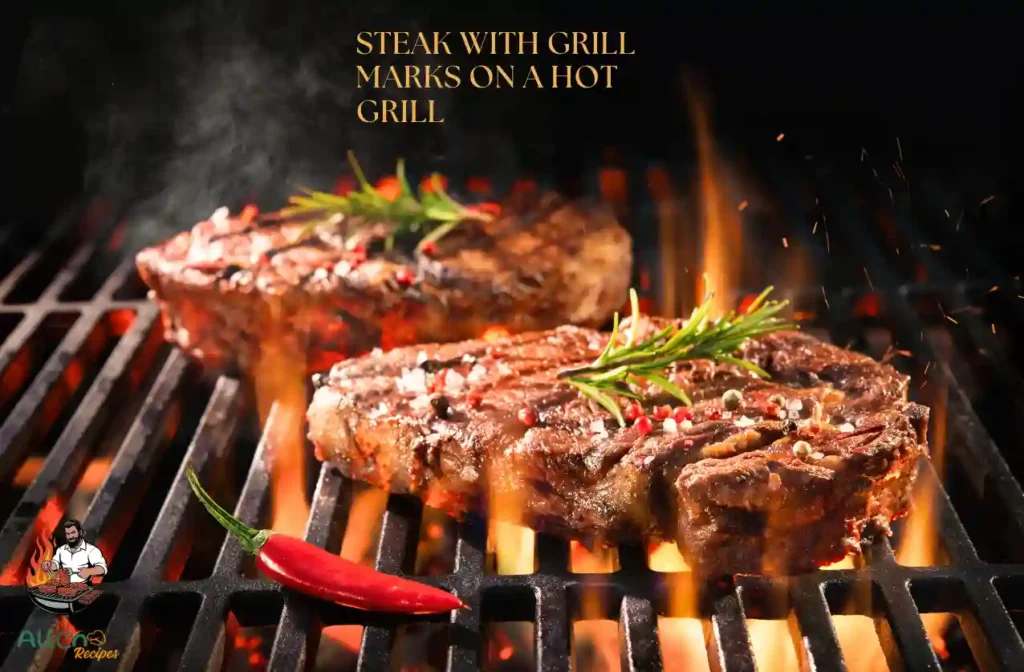
Here’s where the magic, and let’s be honest, the nerves, kick in. Cooking a Delmonico steak isn’t complicated, but it feels like it because you only get one shot per steak. I’ve burned edges, undercooked centers, and once even smoked out my whole apartment. That’s how you learn, though.
Pan + Oven Method (my go-to)
- Preheat everything. Oven to 400°F. Skillet (cast iron if you’ve got it) screaming hot on the stove. Don’t rush this, heat is half the battle.
- Sear first. Drop the steak into the pan. No moving, no poking, no “just checking.” Let it sit until it develops that deep golden crust, about 2–3 minutes per side. The sizzle should sound like applause.
- Transfer to oven. After searing, slide the whole pan into the oven. This gently cooks the inside without scorching the outside.
- Check temperature. Medium-rare usually hits around 130°F. Don’t trust your gut, trust the thermometer.
- Rest. Pull it out, tent with foil, and walk away for 5–10 minutes. The juices redistribute, and the steak relaxes. It’s worth the wait.
Grilling Method (for the char lovers)
- Heat grill to high. Sear each side over direct heat, then move steak to indirect heat to finish cooking.
- Close the lid and let the grill act like an oven. Same rule applies: use a thermometer.
- I’ll admit, grilling feels more “romantic,” but unless you’ve mastered temperature zones, it’s easier to overcook.
A Note on Sous Vide
Yes, it works. Yes, it gives you a perfect edge-to-edge doneness. But honestly? Part of the thrill of cooking steak is the risk. The sear, the smell, the drama, it’s not the same when it comes out of a plastic bag. I’m biased, but I’d rather cook it the old-fashioned way.
Should I Flip the Steak More Than Once?
There’s debate. Some chefs say flip once, others say flip often. Personally, I flip once during the sear, then leave it. Less fiddling, more crust. But hey, if you like to fuss, flipping every minute won’t ruin it, it might even help with even cooking.
Do I really need a meat thermometer?
Yes. Unless you love rolling the dice with a $40 cut of beef. Even chefs use them, it’s not cheating, it’s respect for the steak. You’ll nail your preferred doneness every time, no guessing games.
Doneness & Temperature Guide
I’ll be real with you: judging steak doneness is where even confident home cooks mess up. I’ve ruined more Delmonicos by guessing than I care to admit. You think, “eh, it looks medium-rare,” cut it open, and, bam, it’s practically blue in the middle. Or worse, you overshoot and end up with brown all the way through. That sinking, wallet-regret feeling? Brutal.
So here’s how I look at it now:
- Rare (120–125°F): Soft, red, and basically mooing. Some people love it; me, not so much, it feels like I gave up halfway.
- Medium-Rare (130–135°F): This is the sweet spot. Juicy, pink, still tender but with structure. Nine times out of ten, this is where I land.
- Medium (140–145°F): Not bad, but you’re definitely trading tenderness for “safety.” My dad insists on this, and I’ve stopped fighting him about it.
- Medium-Well (150–155°F): Chewy territory. You’ll need a good knife and maybe a jaw workout.
- Well-Done (160°F+): Look, if you’re going to do this to a Delmonico, just promise me you’ll have steak sauce on standby.
Now, people swear by the “finger test”, press your palm, compare the feel. Honestly? It’s kind of nonsense until you’ve practiced on a dozen steaks. For years, mine all felt the same. I finally gave in and bought a meat thermometer, and I’ll never go back. It takes all the drama out of the guesswork.
One more thing: don’t panic when you pull your steak “early.” If you want 135°F, take it off the heat around 130°F. The steak keeps cooking while it rests, carryover heat is sneaky like that. Learned this the hard way when I pulled a steak right at medium-rare and watched it march up into medium by the time I served it.
Can I Judge Doneness Just by Cutting Into It?
You can, but don’t. Every slice is like opening a dam, juices rush out, and suddenly your “perfect” steak is dry. It’s tempting, but resist. Trust the thermometer instead.
Resting & Finishing Touches
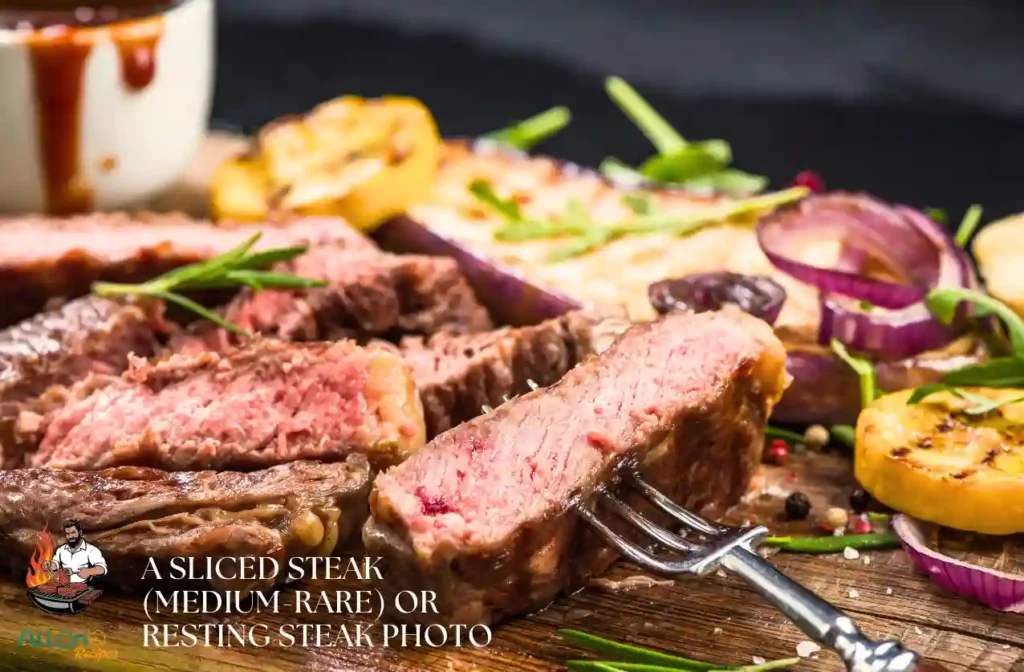
I’ll be honest, resting a Delmonico steak feels like torture. You’ve got this sizzling, golden-brown beauty sitting in front of you, the kitchen smells like heaven, and you’re supposed to… wait? Yeah, right. I used to cut into mine the second it hit the board, convinced I was “just checking.” Of course, what I actually did was bleed all the juice out and end up with a steak that looked great but chewed like cardboard. Painful lesson.
Here’s the deal: resting isn’t some fussy chef rule, it’s the secret. When you give it 5–10 minutes under a loose tent of foil, two things happen: the inside evens out (carryover cooking is sneaky like that), and the juices calm down, spreading back through the meat. Skip it, and you’ll regret it every single bite.
Now, about the finishing touches, this is where you get to show off a little without actually doing much. My usual move: throw in a knob of butter right before pulling it, let it melt into a glossy pool, then spoon it over the top. If I’m feeling fancy (or showing off for company), I’ll add a smashed garlic clove and a sprig of thyme to perfume the butter. Easy win.
And for the love of all things steak, slice against the grain. I used to roll my eyes at that advice until I ignored it once and ended up sawing through chewy strips of beef. Trust me, it makes a difference.
Sometimes I even cheat and drizzle whatever buttery, garlicky juices are left in the pan over the sliced steak. Messy? Yep. But if I’m already doing the dishes, I might as well go all in.
Do I really have to wait before eating?
Sadly, yes. Think of it like hitting “save” on a long project, you wouldn’t risk losing the whole thing just to be done 2 minutes earlier. Waiting sucks, but the payoff? Totally worth it.
Sides & Pairings
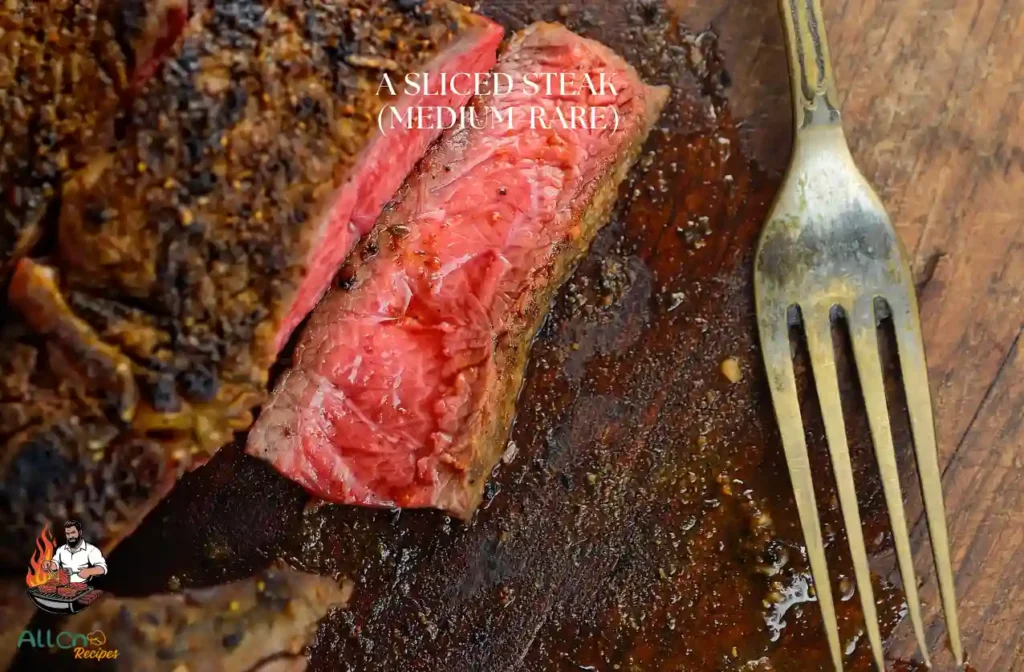
Here’s the thing about a Delmonico steak: it’s already the star of the plate. You don’t need to bury it under a parade of side dishes. The steak wants backup singers, not a rival headliner.
For me, potatoes are non-negotiable. A crispy roasted potato, creamy mash, or even a pile of fries, it’s all fair game. Something about beef and potatoes just makes sense, like jeans and a white T-shirt. Simple, classic, always works.
Then I usually add something green. Not because I’m trying to be “balanced” (though, sure, that’s a bonus), but because a bite of bitter broccoli rabe or garlicky spinach cuts through the richness. Without it, the steak can feel heavy. With it, you suddenly have a meal that feels… complete.
If you want to lean fancy, pour yourself a glass of red wine. Cab, Malbec, Syrah, pick your poison. I once paired a Delmonico with a buttery Chardonnay just to see, and let’s just say I wouldn’t do that again. Stick to reds; they play nicer with the fat and char.
Sauces? Optional. A drizzle of chimichurri if I’m feeling bright and herbal. Maybe peppercorn sauce on a cold night. But honestly, a good Delmonico doesn’t need it. Most of the time I skip sauce altogether and let the steak do the talking.
What’s the Best Side Dish for Delmonico Steak?
If I had to pick one, I’d say roasted potatoes. They’re crispy on the outside, fluffy inside, and they soak up steak juices like little sponges. Add a side of greens and a glass of red, and you’ve got a steakhouse meal without leaving your kitchen.
Common Mistakes & How to Avoid Them
I wish I could tell you I nailed a Delmonico steak the first time I tried. Nope. My track record is a graveyard of dumb mistakes, and honestly, that’s probably why I remember them so well. Here are the ones that burned me (sometimes literally), and how you can dodge them.
1. Throwing it straight from the fridge to the pan.
Guilty. I was starving, impatient, and figured heat would fix everything. What I got: burnt outside, ice-cold inside. Steak tartare with a crust. The fix? Let it sit out for half an hour. Boring, yes. Worth it, absolutely.
2. Messing with it too much.
I used to flip the steak constantly, like I was auditioning for some steak-flipping competition. Then I went the opposite way, left it untouched so long it welded itself to the skillet. The happy middle? Flip once. Twice if you’re nervous. Then leave it alone.
3. Cutting in “just to peek.”
Oh man, I’ve ruined so many steaks this way. You think, “It’s just a tiny slice, no one will notice.” Then all the juice runs out like you stabbed it. The steak dries up, and you sit there pretending it’s fine. Don’t do it. Just… don’t.
4. Playing guess-the-temp.
I used to trust the “touch test.” Supposedly, your palm tells you doneness. My palm always lied. Invest in a thermometer. Seriously. It’s the difference between proud silence at the table and apologizing mid-dinner.
5. Buying the wrong cut because it was on sale.
Learned this the hard way with a “Delmonico” that turned out to be some sad, thin chuck steak. Spoiler: no amount of butter or thyme could save it. If it looks too cheap to be true, it probably is.
Here’s the kicker: you’re going to screw it up at least once. That’s not failure, it’s training. Each mistake is basically tuition in the “School of Steak.” The trick is not making the same mistake twice (still working on that myself).
What’s the worst rookie move?
Easy: cutting too soon. You wait all that time, you nail the cook, then impatience wrecks it in 30 seconds. It’s steak’s version of pulling the cake out of the oven before it’s set. Painful every time.
Nutrition & Calories
Here’s the part where I’m supposed to give you exact numbers, but with a Delmonico steak, it really depends. Ribeye, strip, filet… they’re all different. Add butter basting, and suddenly you’ve doubled the math.
That said, here’s a ballpark for a 12-ounce ribeye (without extras):
- Calories: around 800–900
- Protein: 60–70g
- Fat: 60g (give or take, depending on marbling)
- Carbs: 0 (unless you count the potato on the side, which, let’s be honest, you should).
Now, if you go all-in, seared in butter, finished with herbs, the fat and calories climb. But that’s the trade-off: flavor versus “sticking to the plan.” Personally, I’d rather eat one incredible steak a week than choke down bland chicken breast every night.
One thing worth noting: despite the calories, steak is nutrient-dense. Iron, B vitamins, zinc… stuff your body actually uses. So it’s not empty indulgence, it’s fuel. Delicious, slightly luxurious fuel.
Is Delmonico Steak “Healthy”?
Depends on your definition. If you’re counting macros, it’s a protein bomb with plenty of fat. If you’re thinking heart-healthy? Maybe not your daily driver. But as part of a balanced diet, there are far worse things you could put on your plate.
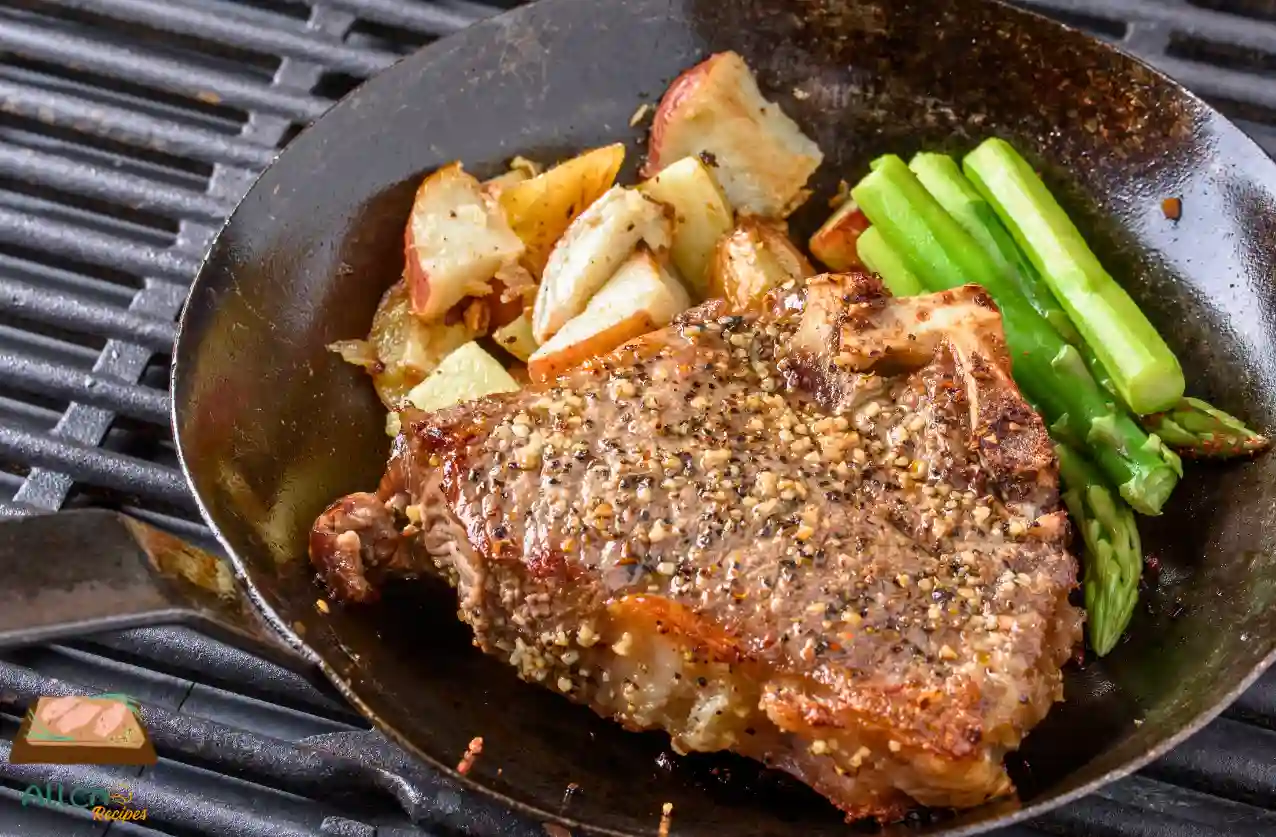
Leave a Reply